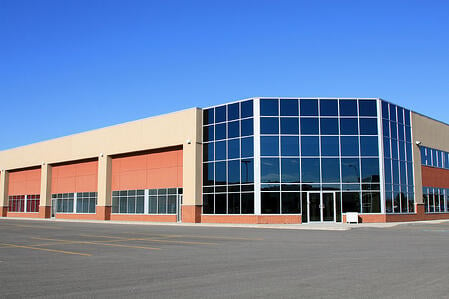 Finding industrial space for your company requires a unique corporate real estate strategy. With industrial property, the details of the building tend to be more important compared to other property types. You probably wouldn't disqualify an office space because it has 9 instead of 9.5-foot ceilings, but in an industrial property, small differences in clear height or in column spacing can have significant impacts on efficiency. As you develop your corporate real estate strategy for industrial properties, here are five factors to consider:
Finding industrial space for your company requires a unique corporate real estate strategy. With industrial property, the details of the building tend to be more important compared to other property types. You probably wouldn't disqualify an office space because it has 9 instead of 9.5-foot ceilings, but in an industrial property, small differences in clear height or in column spacing can have significant impacts on efficiency. As you develop your corporate real estate strategy for industrial properties, here are five factors to consider:
1) Find the Right Location
Typically, you don't look for a location that is prominent or even convenient to your workforce. Instead, a good industrial real estate location is one that is convenient to the items that will go in and out of the facility. For instance, if you're leasing a facility to receive off-loaded goods from a port, kit them, and send them out as air cargo, a location between the port and the airport makes sense. When you ship by rail, a location with a rail spur becomes extremely important since it can save you the expense of trucking your inventory to a loading terminal.
2) Assess the Parking Lot
While parking concerns affect just about every type of commercial real estate, parking lots take on special importance with industrial properties. Physical space can be a major factor, especially if you have large trucks and trailers that come in and out and have to maneuver to get to your docks. Also bear in mind that relatively few industrial properties have adequate parking for people-dense operations like a call center.
3) Analyze the Building's Configuration
Once you've determined that you and your drivers can get in and out of the building, your corporate real estate strategy goes inside the building envelope. Working with an industrial space planner, you can quickly calculate how suitable a space will be for you. For instance, if you have 6-foot deep racks and need a 9-foot aisle for your forklift, a 30 to 32-foot column spacing should maximize efficiency while 36-foot spacing could leave you with wasted space in extra-wide aisles for the columns.
Ceiling height also comes into play when you're determining the value of space – more height equals more capacity, but only to the extent that you actually use it. A space's shape is also important for efficiency. For instance, if you do a great deal of loading and unloading, but all doors are crowded on the narrow end of a rectangular space, trips within the warehouse could take an excessive amount of time.
4) Research the Market
Once you’ve identified the perfect space, your corporate real estate strategy for industrial space becomes more similar to the strategy for any other space. Work with your tenant representative to research the market for two reasons:
- To find similar spaces that you can also occupy and use for negotiating purposes.
- To understand what market norms are for rents and lease terms
5) Negotiate the Lease
Knowing that you've found the right space and some adequate alternatives with results of your market survey in hand, you're finally in position to negotiate a lease with the building's landlord. The lease you negotiate will be a factor of the conditions of the market and your company's corporate real estate strategy. In general, given the rapid rate of change in the modern economy, shorter leases with options will serve you better than leases with longer fixed initial terms, even if you have to pay a little bit more for them up front.








